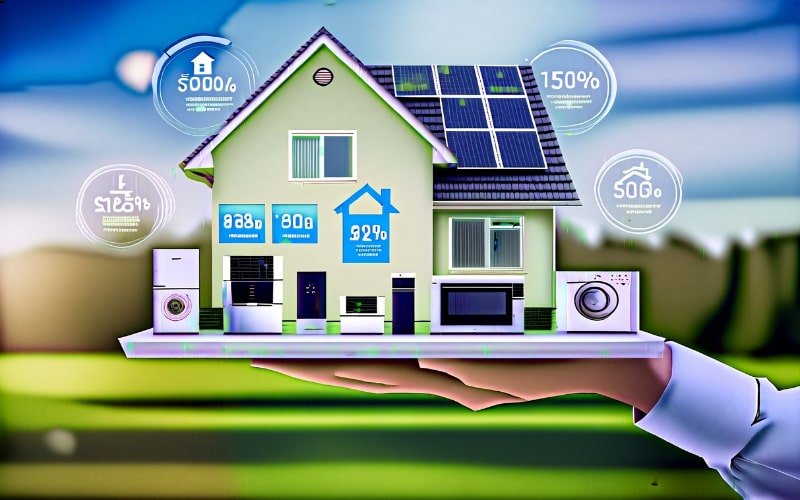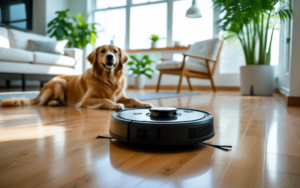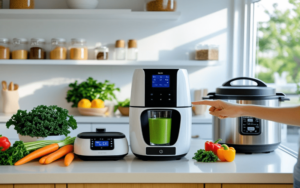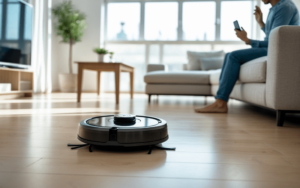Smart home technology is becoming increasingly popular as homeowners seek ways to enhance convenience and efficiency. With a variety of innovative gadgets available, it’s important to identify options that not only improve daily life but also offer financial benefits over time. Investing in smart home devices can lead to significant savings, often covering their initial costs within a year.
From energy-saving appliances to security systems that reduce insurance premiums, many devices provide impressive returns on investment. With the right choices, homeowners can enjoy modern technology while simultaneously lowering their bills and maintenance costs. This article explores ten of the best smart home gadgets that pay for themselves over time, helping individuals make informed decisions for their homes.
Please note that this article contains affiliate links. As an Amazon Associate, we earn from qualifying purchases at no extra cost to you. Thank you for supporting our content!
Cost-Saving Fundamentals: The Economics of Smart Home Gadgets
Smart home gadgets can lead to significant cost savings over time. By reducing energy consumption and automating routine tasks, they can create financial benefits that may quickly offset the initial investment.
Understanding the Long-Term Savings
Smart home gadgets offer various ways to save money. For example, smart thermostats can optimize HVAC usage, potentially reducing energy bills by 10-15%. Similarly, smart plugs and lighting systems can help manage power consumption by controlling devices remotely or scheduling them.
Key savings areas include:
- Energy Efficiency: Smart devices adjust to usage patterns, ensuring less energy is wasted.
- Water Management: Smart irrigation systems can minimize water usage by adapting to weather conditions, leading to lower utility bills.
- Security Savings: Monitoring systems can prevent theft, potentially reducing homeowners’ insurance costs.
These long-term financial benefits can accumulate, making the devices financially advantageous in the long run.
Calculating Return on Investment
Calculating the return on investment (ROI) for smart home gadgets involves comparing initial costs with long-term savings. To assess ROI, consider the purchase price, installation costs, and projected savings over a specific period.
Basic ROI Calculation:
- Initial Investment: Purchase and installation costs.
- Annual Savings: Estimate energy, water, and insurance savings per year.
- Payback Period: Divide the initial investment by annual savings to determine how long it takes to recoup costs.
For example, if a smart thermostat costs $200 and saves $60 annually, the payback period is approximately 3.3 years. Knowing the payback period aids consumers in making informed purchasing decisions.
Energy Efficiency: Smart Devices That Reduce Bills

Smart devices play a crucial role in enhancing energy efficiency within homes. By intelligently managing energy consumption, these gadgets can lead to significant reductions in utility bills over time. Here are three key types of smart devices that contribute to energy savings.
Smart Thermostats and HVAC Systems
Smart thermostats are designed to optimize heating and cooling based on user behavior. These devices learn the homeowner’s schedule and adjust the temperature accordingly. Research indicates that a smart thermostat can save between 12% to 15% on energy bills annually.
Some models enable remote access, allowing users to adjust settings from a smartphone. By ensuring that heating and cooling are only used when necessary, smart thermostats reduce waste. Some systems also integrate with HVAC units to provide data on energy usage, making it easier to pinpoint inefficiencies.
We may earn a small commission if you purchase through this link. Thank you for supporting our content!
LED Smart Lighting
LED smart lighting provides an efficient solution for home illumination. Compared to traditional incandescent bulbs, LED lights consume up to 80% less energy and have a significantly longer lifespan.
Smart lighting systems allow users to control brightness and color, either through a mobile app or voice commands. Automation features enable lights to turn off automatically when no one is present, further conserving energy. Additionally, scheduling options can align lighting with natural daylight, reducing reliance
on artificial light.
We may earn a small commission if you purchase through this link. Thank you for supporting our content!
Intelligent Power Strips and Outlets
Intelligent power strips and outlets can be critical in reducing energy waste from electronics. Many devices remain in standby mode, consuming energy even when not in use. Smart power strips eliminate this “phantom load” by cutting off power when devices are not actively used.
Some models offer individual outlet control, enabling users to manage energy usage based on specific devices. By tracking energy consumption, these gadgets provide insights into usage patterns and help identify energy hogs in a home. This capability can lead to more informed decisions regarding appliance use and replacement.
Automation and Maintenance: Tools That Streamline Home Management
Efficient home management is achievable with the right tools that automate routine tasks and reduce maintenance efforts. These tools not only save time but also help in preventing costly repairs and enhancing comfort.
Robotic Vacuum Cleaners
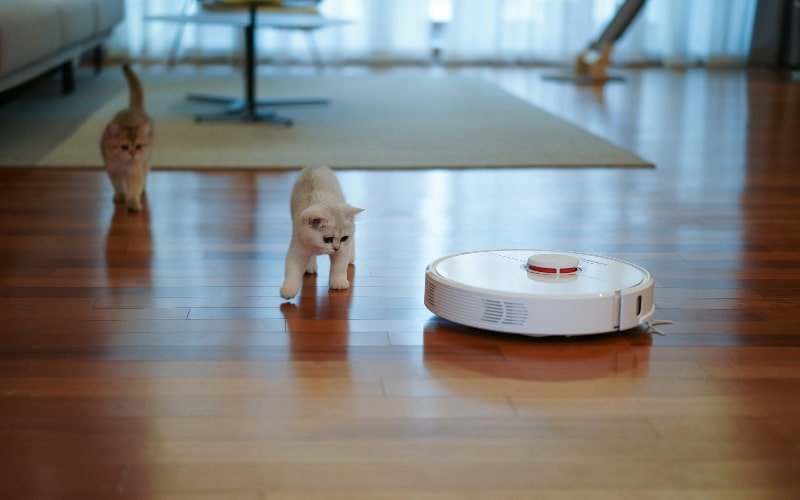
Robotic vacuum cleaners have revolutionized home cleaning by automating the process. Models like the iRobot Roomba or the Roborock S7 can navigate spaces independently, adjusting to different floor types and avoiding obstacles.
They operate on schedules, allowing users to set cleaning times that fit their lifestyles. Many models offer smartphone connectivity for remote operation and monitoring, which adds convenience.
Key benefits include:
- Time-saving: They free up time for other activities.
- Consistent cleaning: Regular cleaning helps maintain a dust-free environment.
- Smart features: Some come equipped with advanced sensors, mapping technology, and integration with smart home systems for seamless operation.
We may earn a small commission if you purchase through this link. Thank you for supporting our content!
Smart Leak Detectors and Water Management
Smart leak detectors are essential in preventing water damage and reducing waste. Devices such as the Aqara Water Leak Sensor or the Flo by Moen detect leaks and alert homeowners instantaneously.
These systems can monitor water usage and identify abnormal patterns. By receiving notifications, users can address issues before they escalate into costly repairs.
Key features include:
- Real-time alerts: Notifications to smartphones aid in prompt action.
- Integration: They can integrate with smart home systems for comprehensive monitoring.
- Environmental protection: Preventing leaks saves water and mitigates environmental impact.
Adopting such automation tools significantly enhances home management efficiency while safeguarding against potential damages.
We may earn a small commission if you purchase through this link. Thank you for supporting our content!
Security and Monitoring: Investments in Safety
Security and monitoring devices offer peace of mind and can lead to significant savings over time. By investing in smart technology, homeowners can protect their property and respond quickly to emergencies.
Smart Security Cameras
Smart security cameras are essential for monitoring residential areas. They provide real-time footage that can be accessed remotely via smartphone apps. Many models come equipped with features such as motion detection, night vision, and two-way audio.
Homeowners can set alerts for unusual activities, enhancing their security measures. Some systems even offer cloud storage for recorded footage, allowing users to review incidents when needed.
Additionally, integrating security cameras with home automation systems can establish a comprehensive security network. This synergy not only protects the home but can also potentially lower insurance premiums, making it a financially sound investment in the long run.
Intelligent Smoke and CO2 Detectors
Intelligent smoke and carbon dioxide detectors play a crucial role in home safety. These devices can distinguish between different types of smoke, reducing false alarms caused by cooking or steam.
Modern detectors often connect to smartphones, issuing alerts even when residents are away. This feature empowers homeowners to act swiftly in case of emergencies, regardless of location.
Some advanced models also provide self-testing features, ensuring they remain functional at all times. Investing in these detectors can lead to lower insurance costs while significantly enhancing safety measures within the residence. Regular maintenance and updates to these devices can ensure they continue to perform effectively over time.
This article contains affiliate links, which means we may earn a commission if you purchase through our links, at no extra cost to you. As an Amazon Associate, we earn from qualifying purchases. Thank you for supporting our content!

